
Roots
The journey of hair, particularly textured hair, is a deeply personal chronicle, often interwoven with choices that stretch beyond mere aesthetics. When we consider the profound impact of chemical treatments, specifically hair relaxers, a quiet query often arises ❉ could these practices, adopted over years, ripple through our very being, touching something as fundamental as reproductive well-being? This is a question that invites a gentle, yet rigorous, exploration, moving beyond the surface shine to the deeper biological currents that shape our health. It beckons us to look closely at the foundational interactions between our chosen hair rituals and the delicate systems within our bodies.

The Chemical Alteration of Hair Strands
Hair relaxers, at their heart, are potent chemical agents designed to permanently alter the natural curl pattern of textured hair. Their primary action involves disrupting the disulfide bonds within the hair’s cortex, the internal structure that gives hair its strength and shape. Lye-based relaxers, containing sodium hydroxide, are particularly powerful, working rapidly to break these bonds.
No-lye relaxers, while often marketed as gentler, typically use calcium hydroxide and guanidine carbonate, creating guanidine hydroxide, which also effectively straightens hair by altering its protein structure. The effectiveness of these products stems from their ability to penetrate the hair shaft and enact a molecular transformation.
This chemical process, while achieving a desired aesthetic outcome, is not without its considerations. The application of these strong alkaline solutions to the scalp means that the chemicals are not solely confined to the hair fiber itself. The scalp, a highly vascularized organ, serves as a gateway.
Micro-abrasions, common during the relaxing process due to scratching or irritation, can provide direct pathways for chemical absorption into the bloodstream. This physiological reality sets the stage for a broader discussion about systemic exposure.
Hair relaxers chemically modify natural curl patterns by breaking protein bonds, a process that can lead to chemical absorption through the scalp.
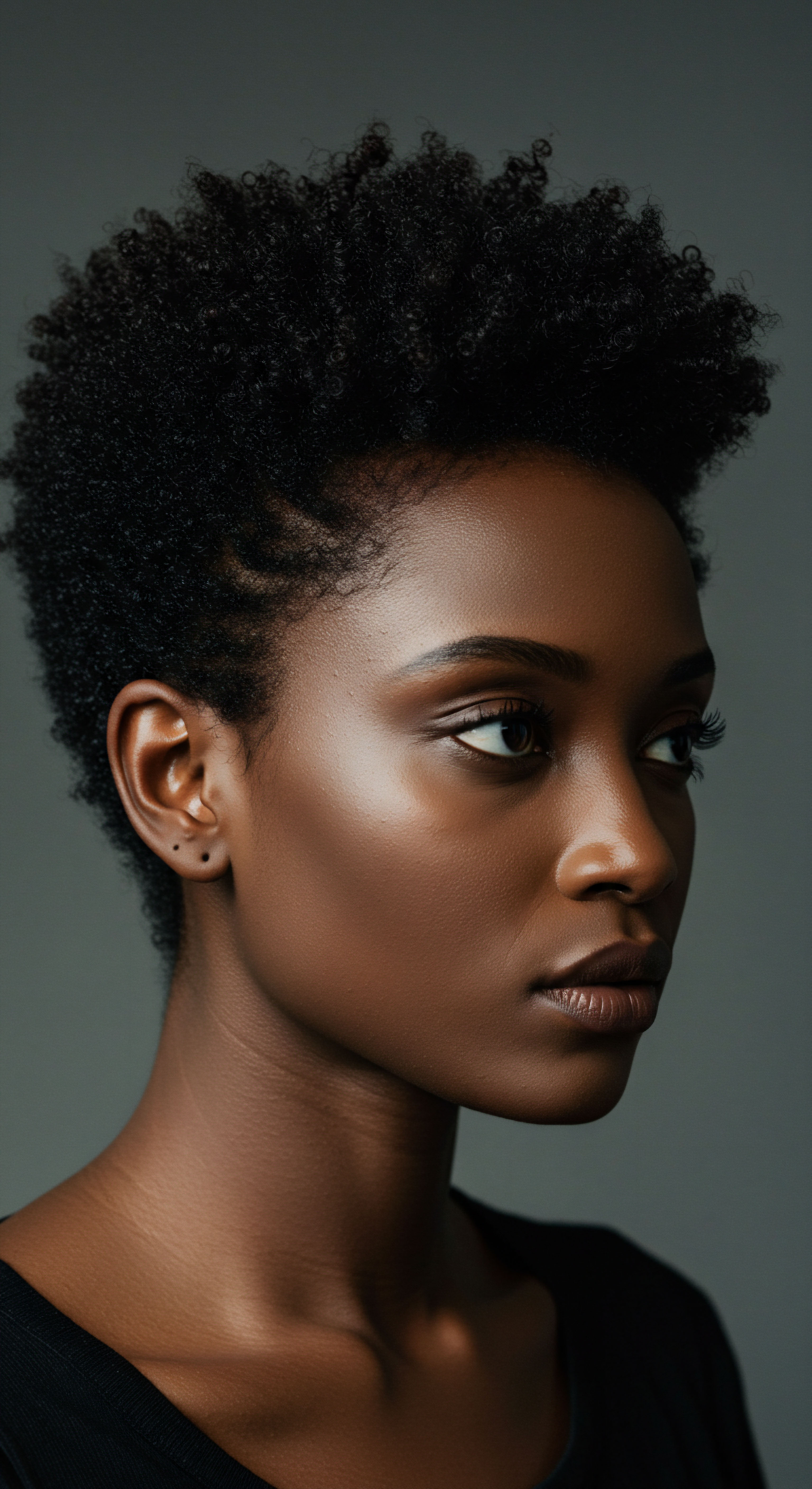
Hair Anatomy and Its Vulnerability
Understanding the composition of hair and scalp is central to comprehending potential interactions. The scalp is a complex environment, rich with sebaceous glands, hair follicles, and a network of blood vessels. Hair follicles themselves are active biological units, capable of absorption.
The outermost layer of the skin, the stratum corneum, acts as a protective barrier, yet its integrity can be compromised by chemical irritation or physical trauma during the relaxing process. Once this barrier is breached, chemicals can enter the dermal layers and subsequently the circulatory system, distributing throughout the body.
Consider the keratinocytes, the predominant cells in the epidermis, and melanocytes, responsible for pigment. These cells, along with the entire follicular unit, are dynamic and responsive to their environment. Exposure to certain compounds can alter their normal function or viability. The persistent nature of some chemical components within relaxer formulations means that even after rinsing, residues might linger on the scalp or within the hair shaft, contributing to ongoing, low-level exposure.
- Keratinocytes are the primary cells of the epidermis, forming a protective barrier that can be compromised by harsh chemicals.
- Melanocytes, situated in the hair follicle, produce pigment and can be affected by various environmental factors.
- Hair Follicles serve as conduits, potentially allowing substances to reach deeper dermal layers and the bloodstream.
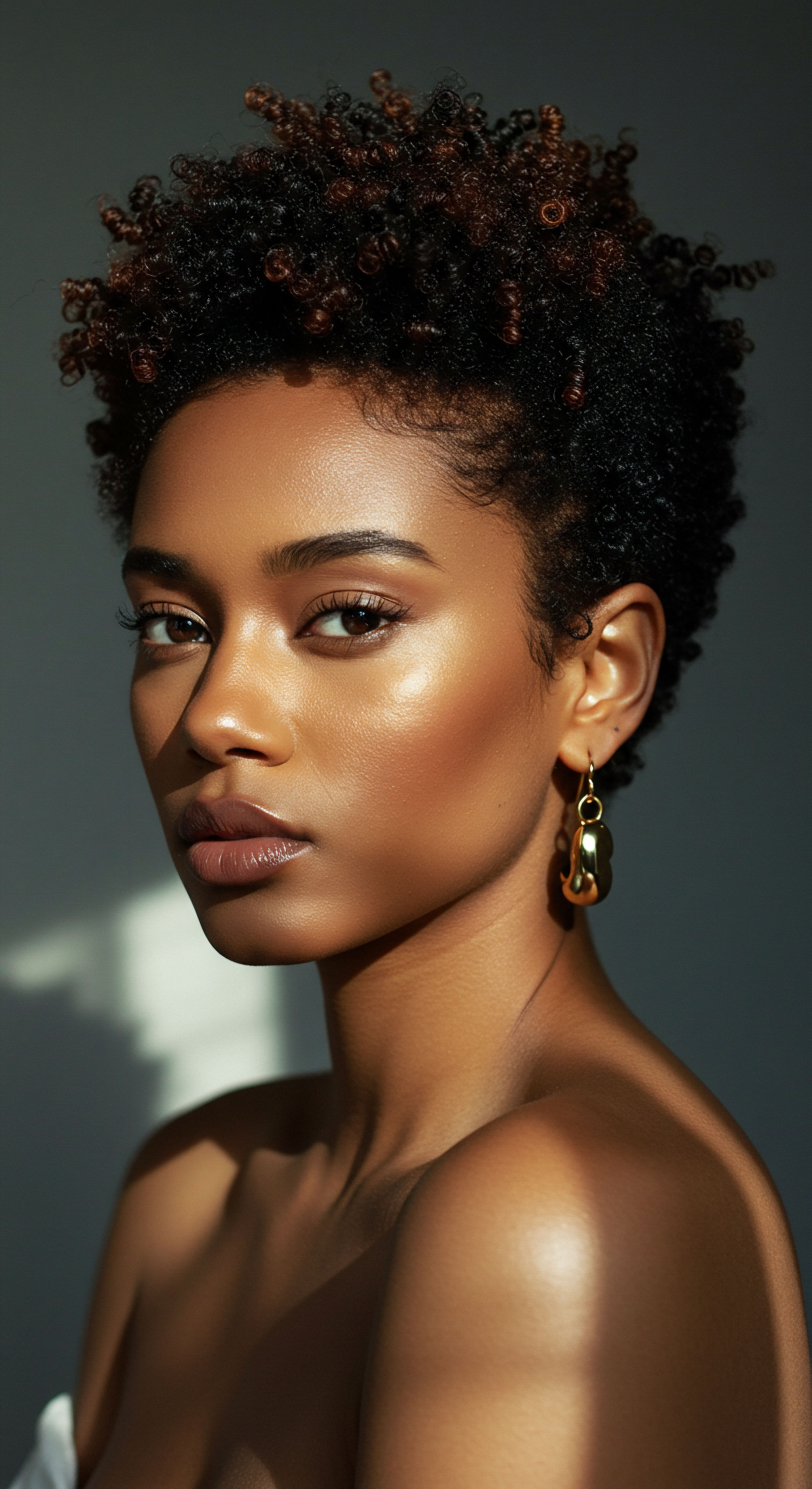
Chemical Components and Systemic Reach
The formulations of hair relaxers contain a variety of ingredients beyond the primary straightening agents. These often include emollients, conditioners, and preservatives. Among these, certain classes of chemicals have drawn attention for their potential systemic effects. Phthalates, for instance, are commonly used as plasticizers and solvents in a wide array of personal care products, including some relaxers.
Parabens, another group of preservatives, are also frequently present. These compounds are of particular interest due to their known or suspected endocrine-disrupting properties.
Endocrine disruptors are exogenous substances or mixtures that alter function(s) of the endocrine system and consequently cause adverse health effects in an intact organism, its progeny, or subpopulations. When these chemicals are absorbed through the scalp, they circulate throughout the body, where they can interact with the intricate hormonal system. This system governs a multitude of bodily functions, including those essential for reproductive health. The long-term implications of repeated exposure to such compounds warrant careful consideration, moving us from the visible changes on hair to the unseen workings within the body.

Ritual
The act of relaxing hair often extends beyond a singular application; for many, it has become a cherished, almost generational, practice, a ritual passed down through families and communities. This rhythmic engagement with relaxers, repeated over months and years, brings forth a more complex layer of inquiry ❉ how do these sustained practices, this repeated interaction with chemical formulations, translate into potential, long-term impacts on the body’s most sensitive systems, particularly those governing reproduction? It is in the cadence of these applications, the regular touch-ups, and the cumulative exposure that we seek deeper understanding.

The Pattern of Repeated Exposure
Hair relaxers are not a one-time application product for most users. To maintain straight hair, individuals typically undergo “touch-ups” every 6 to 12 weeks, as new growth emerges from the scalp. This consistent schedule means that over years, individuals can experience dozens, if not hundreds, of exposures to the chemical compounds within these products. Each application, while aiming to treat only the new growth, invariably involves contact with the scalp, increasing the likelihood of absorption.
The duration of contact also plays a role. Relaxers are left on the hair and scalp for a specified period, often ranging from 15 to 30 minutes, to allow the chemicals sufficient time to alter the hair structure. During this window, the opportunity for transdermal absorption is continuous. Furthermore, the practice of applying relaxers at home, without professional guidance, might sometimes lead to longer application times or less meticulous rinsing, potentially increasing the extent of chemical absorption.
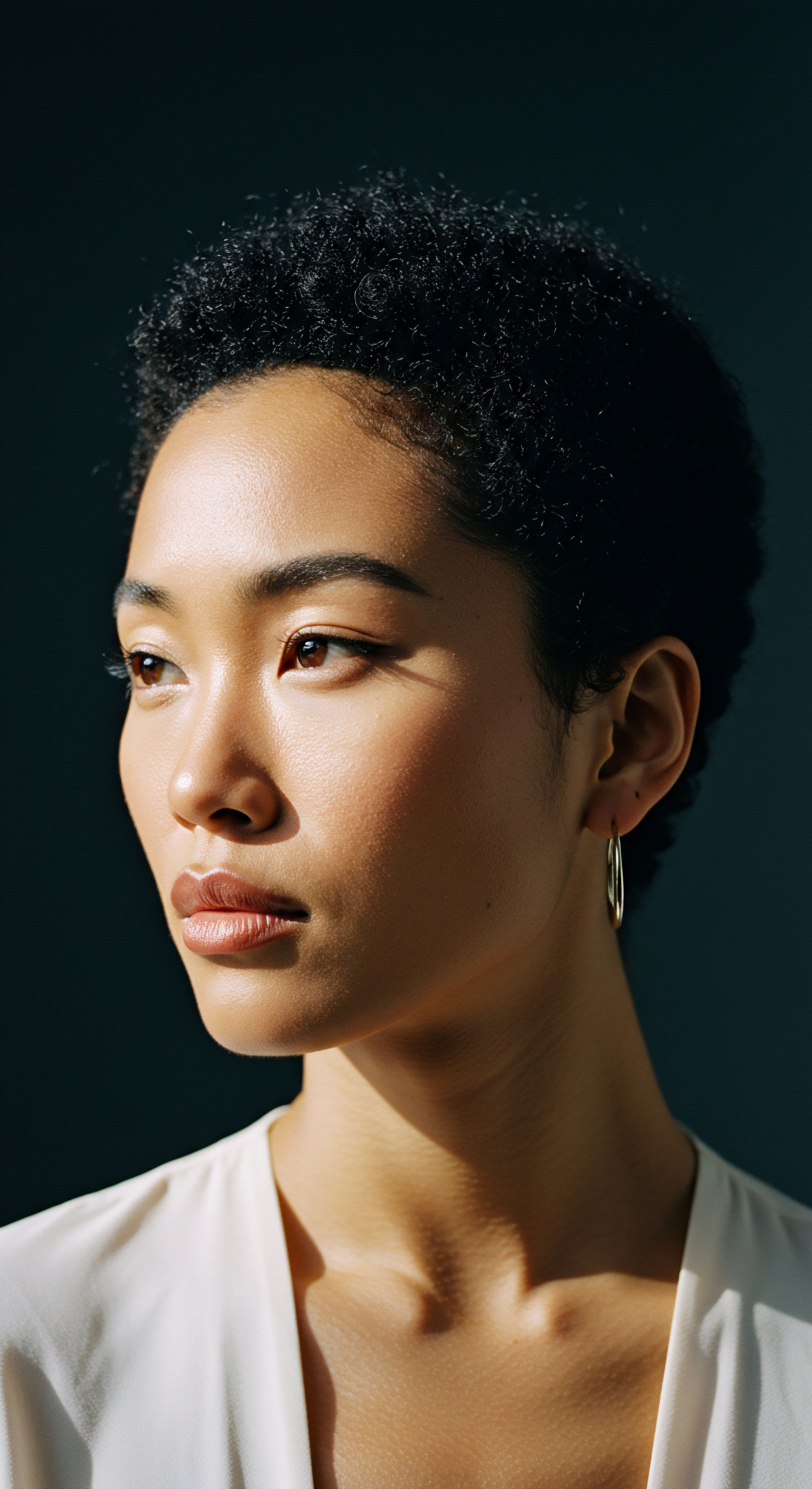
Considering the Chemical Footprint
The chemicals present in relaxers do not simply vanish after rinsing. Some compounds, particularly those with higher lipophilicity (fat-loving properties), can accumulate in fatty tissues over time. While direct evidence of long-term tissue accumulation of specific relaxer chemicals in humans and its direct link to reproductive health is still an area of active research, the principle of bioaccumulation is a known toxicological concept. This means that even low-level exposures, if repeated consistently, could theoretically lead to a build-up of certain substances within the body.
The concern here extends beyond the primary active ingredients to the myriad of ancillary chemicals present in relaxer formulations. These include various solvents, fragrances, and conditioning agents, some of which may not be fully disclosed on product labels due to proprietary reasons. The collective impact of these diverse compounds, particularly when exposure is sustained over many years, warrants a careful and holistic assessment.
Consistent, repeated use of hair relaxers over extended periods presents a cumulative exposure scenario, raising questions about the long-term chemical footprint within the body.

Cultural Practices and Health Implications
For many individuals with textured hair, chemical straightening has been a deeply ingrained cultural practice, a means of conforming to certain beauty standards or achieving a perceived level of professionalism. This historical and societal context adds another layer of complexity to the health discussion. The decision to use relaxers is often not purely an individual aesthetic choice but is shaped by broader cultural narratives and pressures.
The prevalence of relaxer use within specific communities, particularly among Black women, means that any potential health implications could disproportionately affect these populations. This raises important questions about environmental justice and equitable access to information about product safety. Understanding the full scope of potential health impacts requires acknowledging the cultural significance of these practices alongside the scientific data.
- Generational Use has normalized relaxer application across multiple generations within certain communities.
- Beauty Standards have often influenced the widespread adoption of chemical straightening as a desirable aesthetic.
- Sustained Practice means individuals can experience dozens, if not hundreds, of exposures over a lifetime.

Relay
The discourse surrounding hair relaxers and reproductive health extends far beyond superficial concerns, delving into the intricate biological mechanisms that govern our bodies. It invites us to consider the subtle yet significant relay of chemical signals from the external environment to the internal hormonal symphony. Could the persistent application of these agents, over a span of years, truly influence the delicate balance required for reproductive well-being? This segment aims to connect the dots, moving from chemical exposure to potential physiological responses, drawing upon the insights of scientific inquiry and epidemiological patterns.

Unpacking Endocrine Disrupting Chemicals
A central point of concern revolves around endocrine disrupting chemicals (EDCs) often present in hair relaxer formulations. EDCs are compounds that interfere with the body’s endocrine system, which is responsible for producing and regulating hormones. Hormones, in turn, control nearly every physiological process, including growth, metabolism, and crucially, reproduction. Phthalates, parabens, and formaldehyde-releasing agents are among the EDCs frequently identified in personal care products, including some relaxers.

How do Endocrine Disruptors Operate?
EDCs can exert their influence through several pathways. They might mimic natural hormones, binding to hormone receptors and triggering inappropriate responses. Alternatively, they could block hormone receptors, preventing natural hormones from performing their functions.
Some EDCs also interfere with hormone synthesis, transport, metabolism, or excretion. The impact of these disruptions can be subtle but significant, particularly during critical windows of development or over prolonged periods of exposure.
For instance, certain phthalates, like diethyl phthalate (DEP) and dibutyl phthalate (DBP), have been linked to anti-androgenic effects, meaning they can interfere with male hormone action. While these are often studied in the context of male reproductive health, the broader impact of EDCs on the hormonal milieu can have implications for both sexes. Parabens, such as methylparaben and propylparaben, possess weak estrogenic activity, meaning they can mimic the female hormone estrogen. This estrogenic activity, even if weak, could potentially alter hormonal signaling when exposure is chronic.
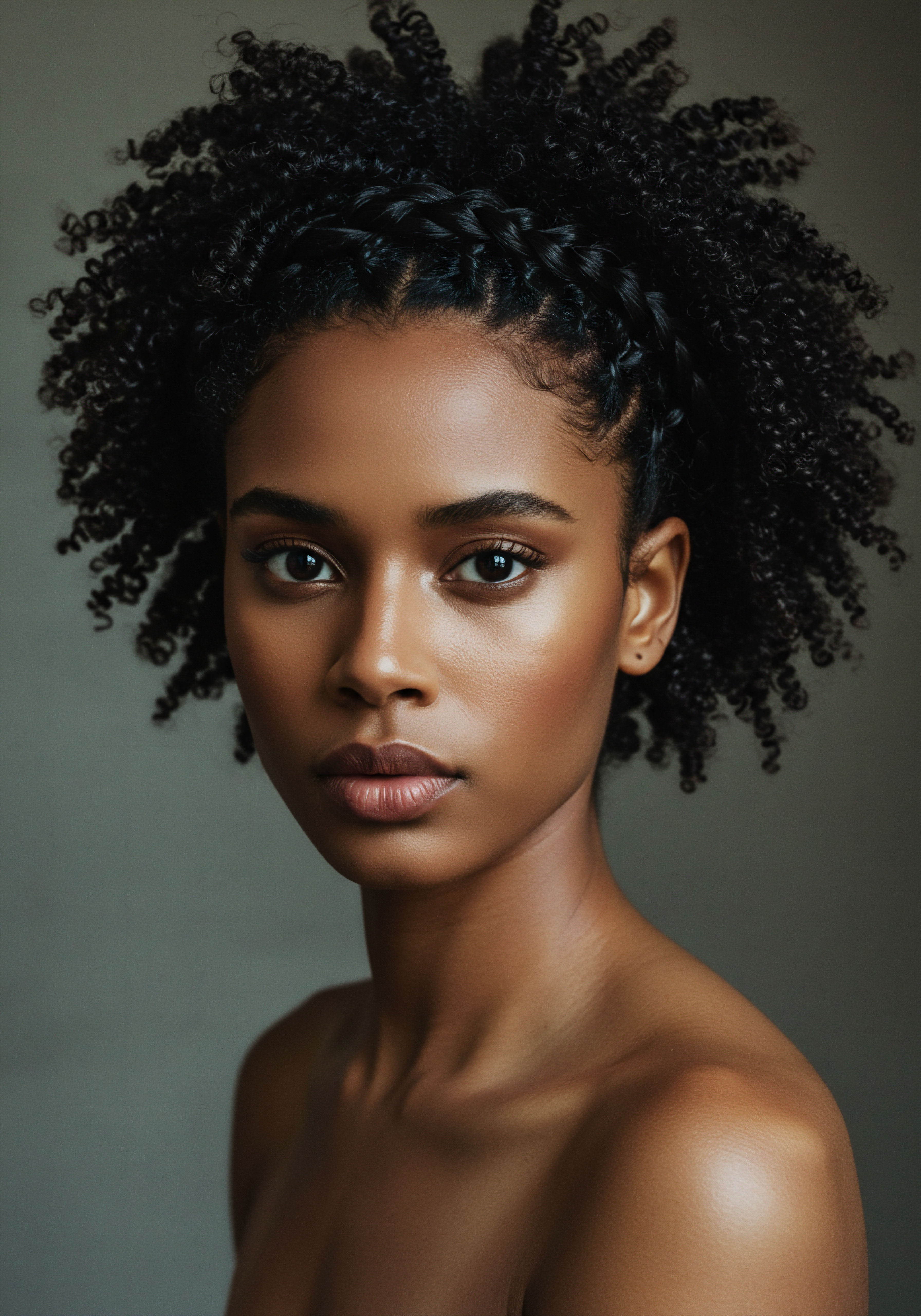
Epidemiological Insights and Reproductive Outcomes
Recent epidemiological studies have begun to shed light on potential associations between hair relaxer use and various reproductive health outcomes. These studies often rely on self-reported data on relaxer use and medical records for diagnoses, offering valuable population-level insights.
A noteworthy study published in the Journal of the National Cancer Institute in 2022, part of the Sister Study, examined the association between hair product use and uterine cancer risk among women. This prospective cohort study, involving over 33,000 U.S. women, found that women who reported frequent use of hair straightening products (more than four times in the previous year) had a significantly higher risk of developing uterine cancer compared to those who never used such products.
Specifically, the incidence rate ratio for uterine cancer was 2.55 (95% confidence interval, 1.36-4.76) for frequent users, indicating a more than twofold increased risk. This particular finding, focusing on uterine cancer, a hormonally sensitive cancer, provides a compelling data point that warrants deep consideration when discussing reproductive health.
Beyond uterine cancer, other research has explored connections to other reproductive health issues. Some studies have investigated links between relaxer use and the incidence of uterine fibroids, benign growths in the uterus that can cause significant health issues, including heavy bleeding, pain, and infertility. While the evidence is still accumulating and some studies show conflicting results, the biological plausibility of such connections, given the presence of EDCs in relaxers and the hormonal sensitivity of fibroids, remains a subject of active scientific inquiry.
| Reproductive Health Concern Uterine Fibroids |
| Mechanism of Potential Association Hormonal disruption by EDCs (e.g. estrogen mimicry), chronic inflammation. |
| Reproductive Health Concern Uterine Cancer |
| Mechanism of Potential Association EDCs influencing estrogen pathways, potentially promoting abnormal cell growth. |
| Reproductive Health Concern Early Puberty |
| Mechanism of Potential Association Precocious hormonal signaling due to exposure to estrogenic compounds. |
| Reproductive Health Concern Reduced Fertility |
| Mechanism of Potential Association Disruption of reproductive hormone balance, impacting ovulation or gamete quality. |
| Reproductive Health Concern These associations represent areas of ongoing scientific investigation and highlight the complexity of environmental chemical exposure. |

The Complexity of Causality
It is important to acknowledge the complexity inherent in establishing direct causal links between specific product use and long-term health outcomes. Epidemiological studies demonstrate associations, but proving direct causation requires a multifaceted approach, often involving laboratory studies, animal models, and further human cohort research. Many factors contribute to reproductive health, including genetics, diet, lifestyle, and other environmental exposures. Isolating the effect of one variable, such as hair relaxer use, within this intricate web can be challenging.
Nevertheless, the growing body of research, particularly studies identifying specific EDCs in relaxer products and correlating their use with hormonally sensitive conditions, raises significant questions. The scientific community continues to scrutinize these connections, seeking to understand the precise pathways through which these chemicals might exert their influence on the reproductive system. This pursuit of knowledge aims to provide clearer guidance for individuals making choices about their hair care practices.
Scientific studies are exploring the complex interplay between chemical relaxers, endocrine disrupting compounds, and their potential associations with hormonally sensitive reproductive conditions.

Beyond the Hair ❉ A Holistic View
The conversation about hair relaxers and reproductive health expands our understanding of wellness to encompass more than just the visible aspects of our appearance. It compels us to consider the interconnectedness of our external choices and our internal biological landscapes. The journey of hair care, for many, is deeply rooted in cultural heritage and personal expression. As we gain deeper scientific insights, the opportunity arises to make choices that honor both our heritage and our health, fostering a more complete sense of well-being.

Reflection
The delicate dance between our personal care practices and our internal well-being invites a thoughtful pause. As we stand at the crossroads of tradition, beauty, and evolving scientific understanding, the quiet query about hair relaxers and reproductive health lingers, not as a definitive verdict, but as an invitation for deeper awareness. Each strand of hair carries not only its unique texture but also the story of choices made, rituals observed, and the ever-present interplay with our environment. What might a deeper understanding of these connections mean for the choices we make, for ourselves, and for future generations?
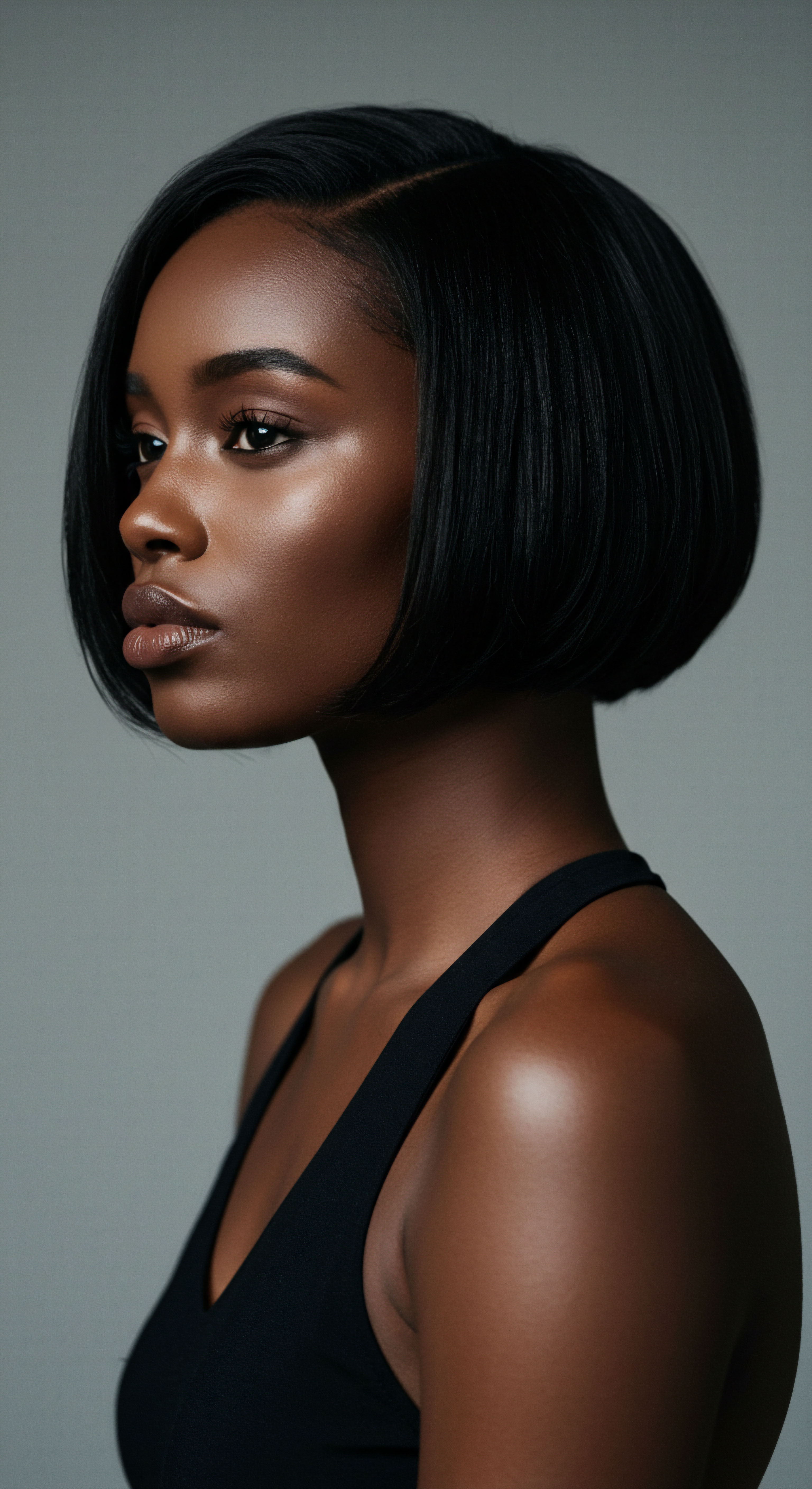
References
- White, A. J. et al. “Hair product use and uterine cancer risk.” Journal of the National Cancer Institute, Volume 115, Issue 1, January 2023, Pages 3-12.
- Soto, A. M. et al. “The role of chemicals in the etiology of uterine fibroids.” Seminars in Reproductive Medicine, Volume 30, Issue 2, April 2012, Pages 109-117.
- Darbre, P. D. and Harvey, P. W. “Parabens and human breast cancer ❉ possible role of endocrine disruption.” Journal of Applied Toxicology, Volume 34, Issue 9, September 2014, Pages 925-938.
- Gore, A. C. et al. “EDC-2 ❉ The Endocrine Society’s Second Scientific Statement on Endocrine-Disrupting Chemicals.” Endocrine Reviews, Volume 36, Issue 6, December 2015, Pages E1-E150.
- Zota, A. R. et al. “Phthalates and human health ❉ A review of the current evidence.” Environmental Health Perspectives, Volume 123, Issue 10, October 2015, Pages A279-A285.
- James-Todd, T. M. et al. “Hair relaxer use and fibroid risk in the Black Women’s Health Study.” American Journal of Epidemiology, Volume 180, Issue 11, December 2014, Pages 1063-1070.
- Helm, J. S. et al. “Chemicals in hair products and breast cancer risk.” Carcinogenesis, Volume 38, Issue 10, October 2017, Pages 989-997.
- Pollack, A. Z. et al. “Perinatal phthalate exposures and male reproductive outcomes.” Fertility and Sterility, Volume 100, Issue 1, July 2013, Pages 189-196.
- Cheek, A. O. et al. “Estrogen and androgen receptor-mediated activities of paraben, phthalate, and other chemicals in human breast cancer cell lines.” Environmental Health Perspectives, Volume 110, Issue 9, September 2002, Pages 897-903.